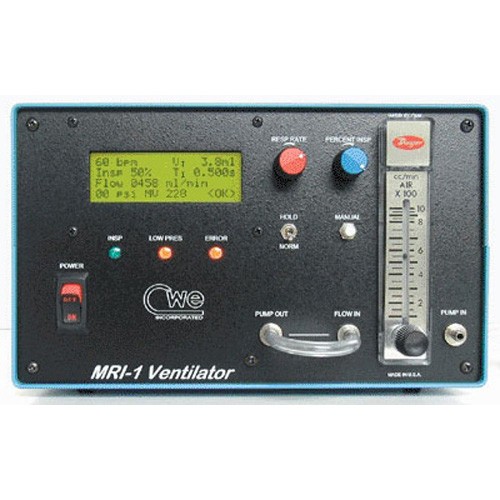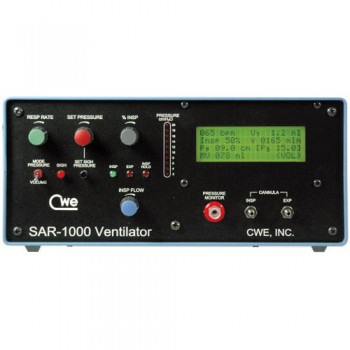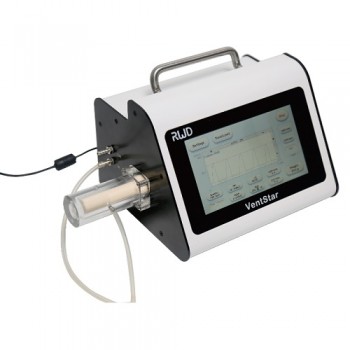
The MRI-1 ventilator is a small animal ventilator designed for use in MRI and other high magnetic field environments. The non-electrical nature of the ventilation valves allows this unit to be particularly well suited to sensitive electrophysiology recording situations.
It consists of a microprocessor-based control unit and a set of remote, pneumatically operated, non-metallic valves. It can operate by itself or be contolled and/or monitored by a computer.
The MRI-1 is a volume-cycled ventilator only. It does not measure airway pressure or use pressure to control ventilation. It operates on the flow-time principle: an inspiratory airflow is established and gated into the animal for a set time, thus producing a known volume. This solution provides extraordinary flexibility: a wide range of volumes, breaths-per-minute, and I/E ratios are possible with no hardware changes, and using just 3 front-panel controls. Respiratory airflow is provided by an internal airpump or an external pressurized gas source (oxygen or anesthetic gas).
Data sheet
- Weight
- 6,3 kg
- Dimensions
- 23 x 14 x 23 cm
- Power supply
- 120/240V (switchable), 100VA
- Animal
- Mice to guinea pig
- Respiratory rate range
- 5-200 breaths/min
- Tidal volume range
- 0.1-30 ml
- Inspiratory flow range
- 60-1000 ml/min
- Inspiration / expiration range (% Insp)
- 20-80%
- Internal air pump capacity
- 4 lpm





